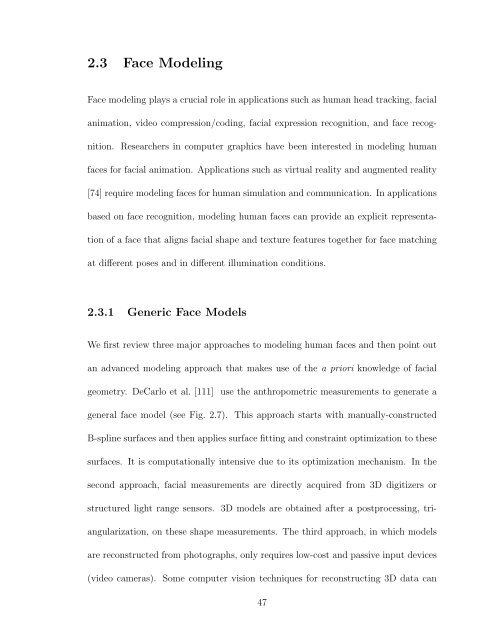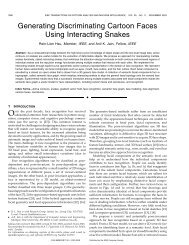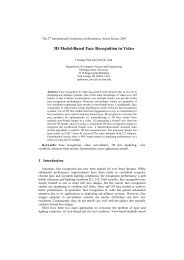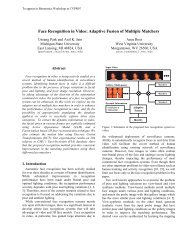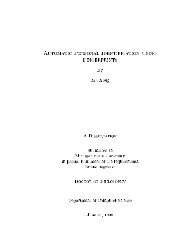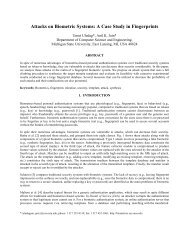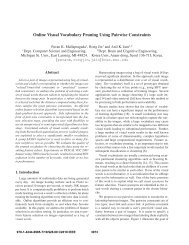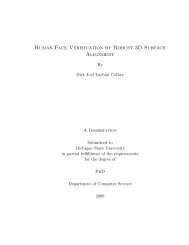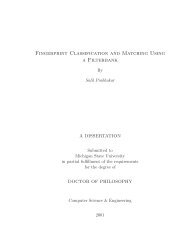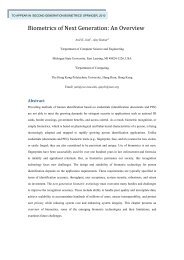Face Detection and Modeling for Recognition - Biometrics Research ...
Face Detection and Modeling for Recognition - Biometrics Research ...
Face Detection and Modeling for Recognition - Biometrics Research ...
Create successful ePaper yourself
Turn your PDF publications into a flip-book with our unique Google optimized e-Paper software.
2.3 <strong>Face</strong> <strong>Modeling</strong><br />
<strong>Face</strong> modeling plays a crucial role in applications such as human head tracking, facial<br />
animation, video compression/coding, facial expression recognition, <strong>and</strong> face recognition.<br />
<strong>Research</strong>ers in computer graphics have been interested in modeling human<br />
faces <strong>for</strong> facial animation. Applications such as virtual reality <strong>and</strong> augmented reality<br />
[74] require modeling faces <strong>for</strong> human simulation <strong>and</strong> communication. In applications<br />
based on face recognition, modeling human faces can provide an explicit representation<br />
of a face that aligns facial shape <strong>and</strong> texture features together <strong>for</strong> face matching<br />
at different poses <strong>and</strong> in different illumination conditions.<br />
2.3.1 Generic <strong>Face</strong> Models<br />
We first review three major approaches to modeling human faces <strong>and</strong> then point out<br />
an advanced modeling approach that makes use of the a priori knowledge of facial<br />
geometry. DeCarlo et al. [111] use the anthropometric measurements to generate a<br />
general face model (see Fig. 2.7). This approach starts with manually-constructed<br />
B-spline surfaces <strong>and</strong> then applies surface fitting <strong>and</strong> constraint optimization to these<br />
surfaces. It is computationally intensive due to its optimization mechanism. In the<br />
second approach, facial measurements are directly acquired from 3D digitizers or<br />
structured light range sensors. 3D models are obtained after a postprocessing, triangularization,<br />
on these shape measurements. The third approach, in which models<br />
are reconstructed from photographs, only requires low-cost <strong>and</strong> passive input devices<br />
(video cameras). Some computer vision techniques <strong>for</strong> reconstructing 3D data can<br />
47


